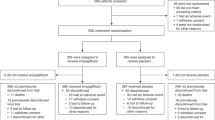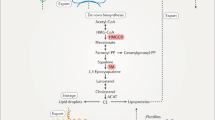Abstract
Excessive salt intake is a major risk factor for hypertension. Here we identify the role of Na+/Ca2+ exchanger type 1 (NCX1) in salt-sensitive hypertension using SEA0400, a specific inhibitor of Ca2+ entry through NCX1, and genetically engineered mice. SEA0400 lowers arterial blood pressure in salt-dependent hypertensive rat models, but not in other types of hypertensive rats or in normotensive rats. Infusion of SEA0400 into the femoral artery in salt-dependent hypertensive rats increases arterial blood flow, indicating peripheral vasodilation. SEA0400 reverses ouabain-induced cytosolic Ca2+ elevation and vasoconstriction in arteries. Furthermore, heterozygous NCX1-deficient mice have low salt sensitivity, whereas transgenic mice that specifically express NCX1.3 in smooth muscle are hypersensitive to salt. SEA0400 lowers the blood pressure in salt-dependent hypertensive mice expressing NCX1.3, but not in SEA0400-insensitive NCX1.3 mutants. These findings indicate that salt-sensitive hypertension is triggered by Ca2+ entry through NCX1 in arterial smooth muscle and suggest that NCX1 inhibitors might be useful therapeutically.
This is a preview of subscription content, access via your institution
Access options
Subscribe to this journal
Receive 12 print issues and online access
$209.00 per year
only $17.42 per issue
Buy this article
- Purchase on Springer Link
- Instant access to full article PDF
Prices may be subject to local taxes which are calculated during checkout






Similar content being viewed by others
References
Mosterd, A. et al. Trends in the prevalence of hypertension, antihypertensive therapy, and left ventricular hypertrophy from 1950 to 1989. N. Engl. J. Med. 340, 1221–1227 (1999).
Kannel, W.B. Elevated systolic blood pressure as a cardiovascular risk factor. Am. J. Cardiol. 85, 251–255 (2000).
Cowley, A.W. Long-term control of arterial blood pressure. Physiol. Rev. 72, 231–300 (1992).
Blaustein, M.P. Physiological effects of endogenous ouabain: control of intracellular calcium stores and cell responsiveness. Am. J. Physiol. 264, C1367–C1387 (1993).
Haddy, F.J. & Pamnani, M.B. Role of dietary salt in hypertension. J. Am. Coll. Nutr. 14, 428–438 (1995).
Lifton, R.P., Gharavi, A.G. & Geller, D.S. Molecular mechanisms of human hypertension. Cell 104, 545–556 (2001).
Hamlyn, J.M. et al. Identification and characterization of a ouabain-like compound from human plasma. Proc. Natl. Acad. Sci. USA 88, 6259–6263 (1991).
Schneider, R. et al. Bovine adrenals contain, in addition to ouabain, a second inhibitor of the sodium pump. J. Biol. Chem. 273, 784–792 (1998).
Bagrov, A.Y. et al. Characterization of a urinary bufodienolide Na+,K+-ATPase inhibitor in patients after acute myocardial infarction. Hypertension 31, 1097–1103 (1998).
Schoner, W. Endogenous cardiac glycosides, a new class of steroid hormones. Eur. J. Biochem. 269, 2440–2448 (2002).
Hamlyn, J.M. et al. A circulating inhibitor of (Na++K+)-ATPase associated with essential hypertension. Nature 300, 650–652 (1982).
Hasegawa, T., Masugi, F., Ogihara, T. & Kumahara, Y. Increase in plasma ouabainlike inhibitor of Na+,K+-ATPase with high sodium intake in patients with essential hypertension. J. Clin. Hypertens. 3, 419–429 (1987).
Hamlyn, J.M., Hamilton, B.P. & Manunta, P. Endogenous ouabain, sodium balance and blood pressure: a review and a hypothesis. J. Hypertens. 14, 151–167 (1996).
Manunta, P. et al. Left ventricular mass, stroke volume, and ouabain-like factor in essential hypertension. Hypertension 34, 450–456 (1999).
Goto, A. & Yamada, K. Putative roles of ouabainlike compound in hypertension: revisited. Hypertens. Res. 23, S7–S13. (2000).
Fedorova, O.V., Lakatta, E.G. & Bagrov, A.Y. Endogenous Na,K pump ligands are differentially regulated during acute NaCl loading of Dahl rats. Circulation 102, 3009–3014 (2000).
Ferrari, P. et al. PST2238: a new antihypertensive compound that antagonizes the long-term pressor effect of ouabain. J. Pharmacol. Exp. Ther. 285, 83–94 (1998).
Takahashi, H. Endogenous digitalislike factor: an update. Hypertens. Res. 23, S1–S5 (2000).
Blaustein, M.P. Sodium ions, calcium ions, blood pressure regulation, and hypertension: a reassessment and a hypothesis. Am. J. Physiol. 232, C165–C173 (1977).
Philipson, K.D. & Nicoll, D.A. Sodium-calcium exchange: a molecular perspective. Annu. Rev. Physiol. 62, 111–133. (2000).
Nakasaki, Y., Iwamoto, T., Hanada, H., Imagawa, T. & Shigekawa, M. Cloning of the rat aortic smooth muscle Na+/Ca2+ exchanger and tissue-specific expression of isoforms. J. Biochem. 114, 528–534 (1993).
Lee, S.L., Yu, A.S. & Lytton, J. Tissue-specific expression of Na+-Ca2+ exchanger isoforms. J. Biol. Chem. 269, 14849–14852 (1994).
Quednau, B.D., Nicoll, D.A. & Philipson, K.D. Tissue specificity and alternative splicing of the Na+/Ca2+ exchanger isoforms NCX1, NCX2, and NCX3 in rat. Am. J. Physiol. 272, C1250–C1261 (1997).
Bers, D.M. Cardiac excitation-contraction coupling. Nature 415, 198–205 (2002).
Blaustein, M.P. & Lederer, W.J. Sodium/calcium exchange: its physiological implications. Physiol. Rev. 79, 763–854 (1999).
Shigekawa, M. & Iwamoto, T. Cardiac Na+-Ca2+ exchange: molecular and pharmacological aspects. Circ. Res. 88, 864–876 (2001).
Matsuda, T. et al. SEA0400, a novel and selective inhibitor of the Na+-Ca2+ exchanger, attenuates reperfusion injury in the in vitro and in vivo cerebral ischemic models. J. Pharmacol. Exp. Ther. 298, 249–256 (2001).
Iwamoto, T. et al. Molecular determinants of Na+/Ca2+ exchange (NCX1) inhibition by SEA0400. J. Biol. Chem. 279, 7544–7553 (2004).
Yuan, C.M. et al. Long-term ouabain administration produces hypertension in rats. Hypertension 22, 178–187 (1993).
Manunta, P., Rogowski, A.C., Hamilton, B.P. & Hamlyn, J.M. Ouabain-induced hypertension in the rat: relationships among plasma and tissue ouabain and blood pressure. J. Hypertens. 12, 549–560 (1994).
Berne, R.M. & Levy, M.N. Chapter V. Hemodynamics. in Cardiovascular Physiology edn. 8 (eds. Berne, R.M. & Levy, M.N.) 115–134 (Mosby, St. Louis, 2001).
Knot, H.J. & Nelson, M.T. Regulation of arterial diameter and wall [Ca2+] in cerebral arteries of rat by membrane potential and intravascular pressure. J. Physiol. 508, 199–209 (1998).
Tanaka, H. et al. Effect of SEA0400, a novel inhibitor of sodium-calcium exchanger, on myocardial ionic currents. Br. J. Pharmacol. 135, 1096–1100 (2002).
Wakimoto, K. et al. Targeted disruption of Na+/Ca2+ exchanger gene leads to cardiomyocyte apoptosis and defects in heartbeat. J. Biol. Chem. 275, 36991–36998 (2000).
Berridge, M.J., Bootman, M.D. & Roderick, H.L. Calcium signalling: dynamics, homeostasis and remodelling. Nat. Rev. Mol. Cell Biol. 4, 517–529 (2003).
Poburko, D., Kuo, K.H., Dai, J., Lee, C.H. & van Breemen, C. Organellar junctions promote targeted Ca2+ signaling in smooth muscle: why two membranes are better than one. Trends Pharmacol. Sci. 25, 8–15 (2004).
Slodzinski, M.K., Juhaszova, M. & Blaustein, M.P. Antisense inhibition of Na+/Ca2+ exchange in primary cultured arterial myocytes. Am. J. Physiol. 269, C1340–C1345 (1995).
Slodzinski, M.K. & Blaustein, M.P. Physiological effects of Na+/Ca2+ exchanger knockdown by antisense oligodeoxynucleotides in arterial myocytes. Am. J. Physiol. 275, C251–C259 (1998).
Sweadner, K.J. Isozymes of the Na+/K+-ATPase. Biochim. Biophys. Acta. 988, 185–220 (1989).
Moore, E.D. et al. Coupling of the Na+/Ca2+ exchanger, Na+/K+ pump and sarcoplasmic reticulum in smooth muscle. Nature 365, 657–660 (1993).
Juhaszova, M. & Blaustein, M.P. Distinct distribution of different Na+ pump α subunit isoforms in plasmalemma. Physiological implications. Ann. N.Y. Acad. Sci. 834, 524–536 (1997).
Fujioka, Y., Matsuoka, S., Ban, T. & Noma, A. Interaction of the Na+-K+ pump and Na+-Ca2+ exchange via [Na+]i in a restricted space of guinea-pig ventricular cells. J. Physiol. 509, 457–470 (1998).
Arnon, A., Hamlyn, J.M. & Blaustein, M.P. Ouabain augments Ca2+ transients in arterial smooth muscle without raising cytosolic Na+. Am. J. Physiol. 279, H679–H691 (2000).
Reuter, H. et al. The Na+-Ca2+ exchanger is essential for the action of cardiac glycosides. Circ. Res. 90, 305–308 (2002).
Aizman, O., Uhlen, P., Lal, M., Brismar, H. & Aperia, A. Ouabain, a steroid hormone that signals with slow calcium oscillations. Proc. Natl. Acad. Sci. USA 98, 13420–13424 (2001).
Krushkal, J. et al. Genome-wide linkage analyses of systolic blood pressure using highly discordant siblings. Circulation 99, 1407–1410 (1999).
Iwamoto, T., Pan, Y., Nakamura, T.Y., Wakabayashi, S. & Shigekawa, M. Protein kinase C-dependent regulation of Na+/Ca2+ exchanger isoforms NCX1 and NCX3 does not require their direct phosphorylation. Biochemistry 37, 17230–17238 (1998).
Zhang, J., Wier, W.G. & Blaustein, M.P. Mg2+ blocks myogenic tone but not K+-induced constriction: role for SOCs in small arteries. Am. J. Physiol. 283, H2692–H2705 (2002).
Yamashita, J. et al. Attenuation of ischemia/reperfusion-induced renal injury in mice deficient in Na+/Ca2+ exchanger. J. Pharmacol. Exp. Ther. 304, 284–293 (2003).
Matsumura, Y. et al. Exaggerated vascular and renal pathology in endothelin-B receptor-deficient rats with deoxycorticosterone acetate-salt hypertension. Circulation 102, 2765–2773 (2000).
Acknowledgements
We thank K. Takahashi and S. Okuyama (Taisho Pharmaceutical Co. Ltd.), K. Saku and H. Urata (Fukuoka University), J. Kimura (Fukushima Medical University) and Y. Matsumura (Osaka University of Pharmaceutical Sciences) for discussions, and W.G. Wier and R. Saunders (University of Maryland) for help in making the video clip. This work was supported by Grants-in-Aid for scientific research (14570097, 16590213) from the Ministry of Education, Science and Culture of Japan, a grant from the Salt Science Research Foundation (No.02), US National Institutes of Health grant HL-45215, and an American Heart Association Mid-Atlantic Affiliate Postdoctoral Fellowship.
Author information
Authors and Affiliations
Corresponding author
Ethics declarations
Competing interests
The authors declare no competing financial interests.
Supplementary information
Supplementary Fig. 1
Expression levels and NCX activities in CCL39 fibroblasts overexpressing human NCX1 isoforms. (PDF 232 kb)
Supplementary Fig. 2
Effect of SEA0400 on the development of DOCA-salt hypertension in rats. (PDF 633 kb)
Supplementary Fig. 3
VSM-specific overexpression of NCX1.3 and its mutant in N1.3Tg/Tg and N1.3Tg/Tg mice. (PDF 233 kb)
Supplementary Fig. 4
Salt-insensitivity in transgenic mice with heart-specific overexpression of NCX1.1. (PDF 302 kb)
Supplementary Table 1
Effects of SEA0400 on morphological changes of thoracic aortas in DOCA-salt hypertensive rats (PDF 10 kb)
Supplementary Table 2
Effects of SEA0400 on creatinine clearance, urinary excretion of protein, and fractional excretion of sodium in DOCA-salt hypertensive rats (PDF 10 kb)
Supplementary Movie
Effects of ouabain and SEA0400 on cytosolic Ca2+ and myogenic tone in a small mesenteric artery. (MOV 2980 kb)
Rights and permissions
About this article
Cite this article
Iwamoto, T., Kita, S., Zhang, J. et al. Salt-sensitive hypertension is triggered by Ca2+ entry via Na+/Ca2+ exchanger type-1 in vascular smooth muscle. Nat Med 10, 1193–1199 (2004). https://doi.org/10.1038/nm1118
Received:
Accepted:
Published:
Issue Date:
DOI: https://doi.org/10.1038/nm1118
This article is cited by
-
Signaling pathways in vascular function and hypertension: molecular mechanisms and therapeutic interventions
Signal Transduction and Targeted Therapy (2023)
-
The impact of excessive salt intake on human health
Nature Reviews Nephrology (2022)
-
Association of Circulating Biomarkers of lnc-IGSF3-1:1, SCOC-AS1, and SLC8A1-AS1 with Salt Sensitivity of Blood Pressure in Chinese Population
Journal of Cardiovascular Translational Research (2022)
-
Genetics of ion homeostasis in Ménière’s Disease
European Archives of Oto-Rhino-Laryngology (2017)
-
Salt Sensitivity: Challenging and Controversial Phenotype of Primary Hypertension
Current Hypertension Reports (2016)



